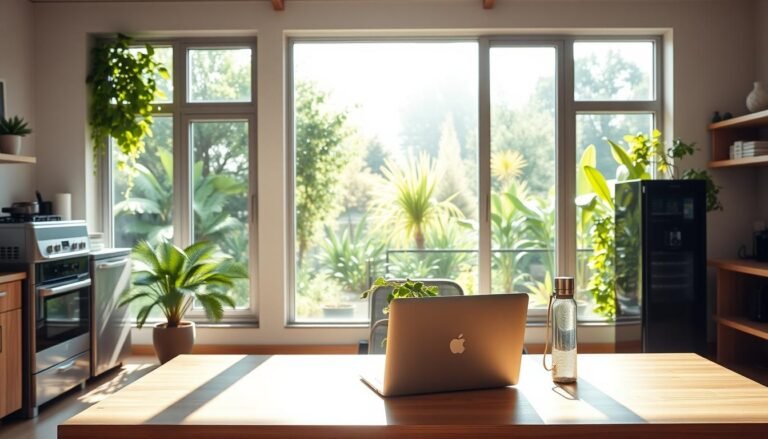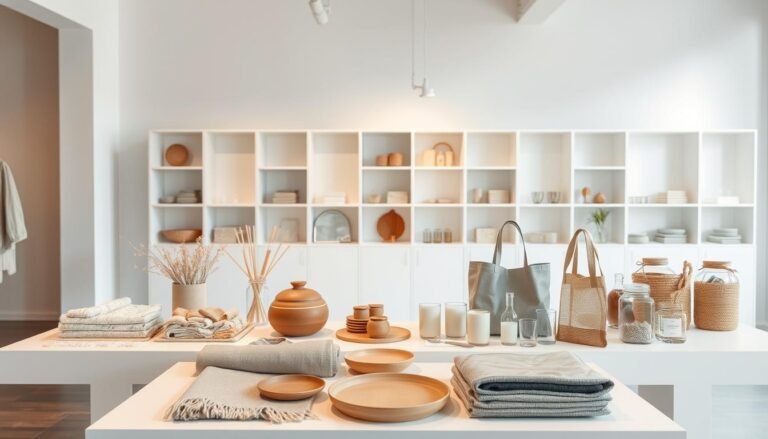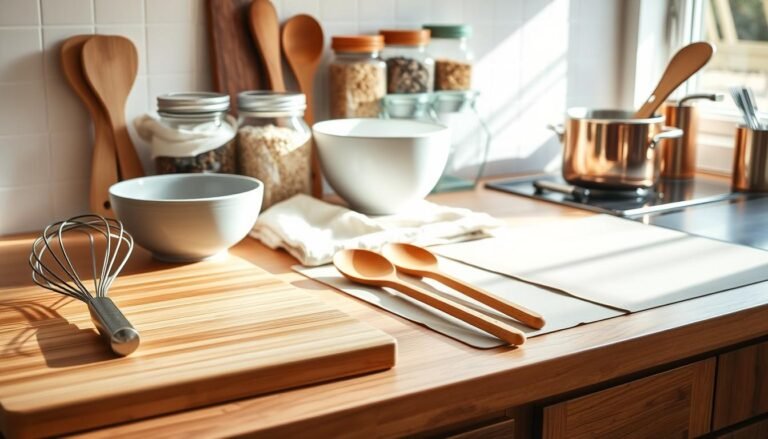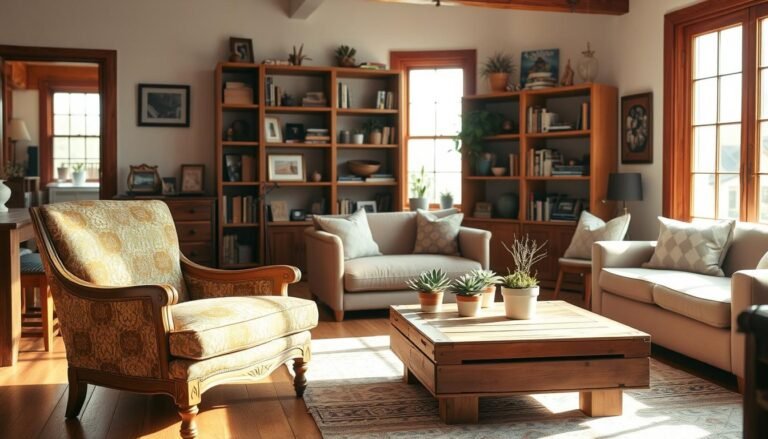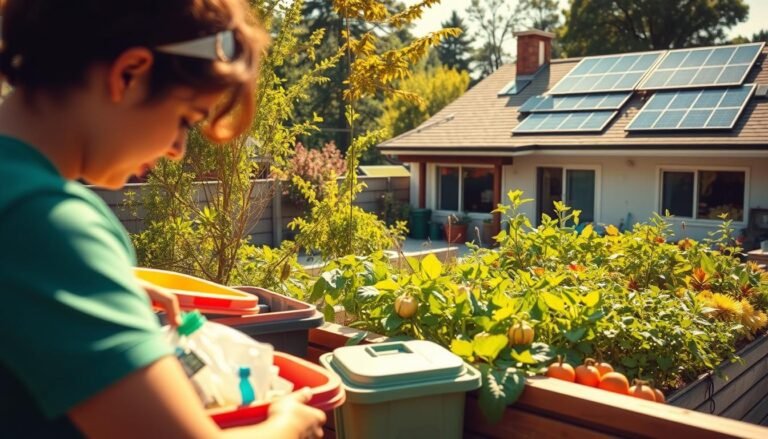As Australians become more environmentally conscious, the trend towards sustainable renovation is gaining momentum. Renovating your home doesn’t have to come at the expense of the planet. By adopting eco-friendly practices, you can improve your living space while reducing your environmental footprint.
Simple changes can make a significant difference. From choosing materials with low environmental impact to enhancing energy efficiency, there are numerous green home tips that can guide your renovation project. The benefits are twofold: not only do you contribute to a healthier planet, but you also potentially increase your property’s value.
Key Takeaways
- Choose materials with low environmental impact for your renovation.
- Enhance energy efficiency to reduce your carbon footprint.
- Consider sustainable renovation options to increase your property’s value.
- Implement green home tips to create a healthier living space.
- Reduce, reuse, and recycle materials during your renovation project.
The Growing Importance of Sustainable Home Renovations in Australia
In response to Australia’s unique climate challenges, the trend towards sustainable home renovations is gaining momentum. Australian homeowners are becoming increasingly aware of the need to reduce their environmental impact while enhancing their living spaces.
Climate Challenges Unique to Australian Homes
Australia’s diverse climate, ranging from tropical to temperate, poses specific challenges for homeowners. Extreme weather conditions, such as heatwaves and bushfires, require homes to be resilient and energy-efficient. Sustainable renovations can help mitigate these challenges by incorporating climate-specific design and materials.
The Rising Trend of Green Building in Australia
The trend towards green building in Australia is driven by both environmental concerns and economic benefits. Homeowners are adopting sustainable practices, such as using recycled materials and installing energy-efficient systems, to reduce their ecological footprint. This shift is supported by government initiatives and incentives promoting eco-friendly construction and renovation practices.
Essential Eco-Friendly Home Renovation Tips for Australian Homeowners
As an Australian homeowner, you’re likely aware of the growing importance of making eco-friendly choices, especially when it comes to renovating your home. With the rising concerns about climate change and environmental sustainability, incorporating green renovation tips into your home improvement plans can significantly reduce your ecological footprint.
Environmental Benefits of Green Renovations
Green renovations offer numerous environmental benefits, including reduced energy consumption and lower greenhouse gas emissions. By incorporating eco-friendly elements such as energy-efficient appliances, sustainable building materials, and improved insulation, homeowners can significantly decrease their home’s environmental impact. For instance, installing solar panels can reduce reliance on non-renewable energy sources, while rainwater harvesting systems can minimize water waste.
Financial Advantages of Sustainable Home Upgrades
In addition to the environmental benefits, sustainable home upgrades can also provide significant financial advantages. Energy-efficient renovations can lead to substantial savings on utility bills over time. Moreover, eco-friendly upgrades can increase your home’s value, making it more attractive to potential buyers if you decide to sell in the future. Government incentives and rebates for green renovations can also help offset the initial costs, making sustainable upgrades more financially accessible.
Assessing Your Home’s Current Environmental Footprint
Assessing the environmental impact of your home is the first step towards making eco-friendly renovations. This process involves understanding how your home consumes energy and identifying areas where improvements can be made.
Conducting a DIY Home Energy Audit
A DIY home energy audit is a straightforward way to evaluate your home’s energy efficiency. Start by checking your energy bills to understand your consumption patterns. Then, inspect your home for areas where energy might be leaking, such as gaps around windows and doors or inadequate insulation. You can use a candle or incense stick to detect air leaks. For a more detailed assessment, consider using an energy monitoring device to track your energy usage in real-time.
Identifying Priority Areas for Green Improvements
Once you’ve conducted your energy audit, you’ll have a clearer picture of where your home needs improvements. Prioritize areas that will have the most significant impact on reducing your environmental footprint. This could include upgrading to energy-efficient appliances, improving insulation, or installing new windows. By focusing on the most critical areas first, you can make your renovation project more manageable and cost-effective.
Planning Your Eco-Friendly Renovation Project
A well-planned eco-friendly renovation can significantly reduce environmental impact while enhancing home value. Effective planning involves setting clear goals, budgeting appropriately, and understanding the financial incentives available for green renovations.
Setting Sustainable Goals and Priorities
Setting sustainable goals is the first step in planning your eco-friendly renovation. Identify areas of your home that need improvement and prioritize projects based on their environmental impact and cost-effectiveness. Consider factors such as energy efficiency, water conservation, and the use of sustainable materials.
Budgeting for Green Renovations in Australia
Budgeting is a critical aspect of any renovation project. For eco-friendly renovations, it’s essential to consider both the upfront costs and the long-term savings. Understanding rebates and incentives can help offset initial expenses.
Understanding Rebates and Incentives
The Australian government offers various rebates and incentives for homeowners who undertake green renovations. These can include grants for energy-efficient upgrades, solar panel installations, and water-saving measures. Research available programs to maximize your benefits.
Long-term Cost Savings Calculations
While eco-friendly renovations may have higher upfront costs, they often result in significant long-term savings. Calculate the potential savings from reduced energy and water bills to understand the financial benefits of your investment.
| Renovation Type | Upfront Cost | Long-term Savings |
|---|---|---|
| Energy-Efficient Windows | $10,000 | $2,000/year on energy bills |
| Solar Panel Installation | $15,000 | $3,000/year on electricity |
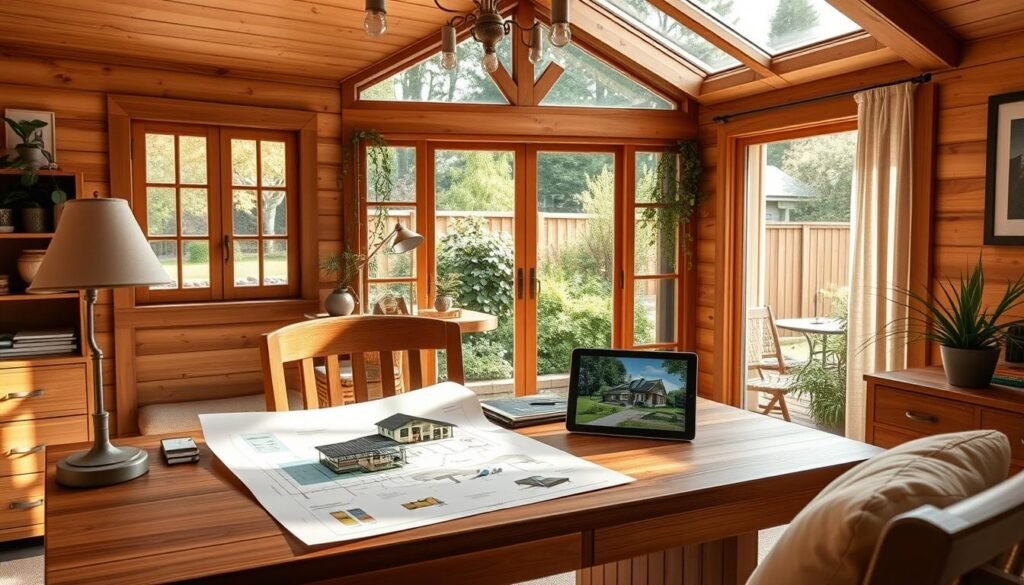
By carefully planning your eco-friendly renovation, setting sustainable goals, and budgeting effectively, you can create a more sustainable home while also benefiting from long-term cost savings.
Sustainable Building Materials for Australian Homes
Sustainable building materials play a vital role in reducing the environmental footprint of Australian homes. As homeowners become more environmentally conscious, the demand for eco-friendly materials has increased. This section explores the various sustainable building materials suitable for Australian homes, focusing on locally-sourced and recycled materials, low-VOC and non-toxic options, and sustainable timber alternatives.
Locally-Sourced and Recycled Materials
Using locally-sourced materials reduces transportation emissions and supports local economies. Recycled materials, on the other hand, decrease the need for new raw materials and help divert waste from landfills. Examples include recycled glass countertops, reclaimed timber, and recycled metal roofing. According to a study, using recycled materials can reduce the environmental impact of construction by up to 30%.
“The use of locally-sourced and recycled materials not only reduces the carbon footprint of construction but also adds unique character to homes.”
Low-VOC and Non-Toxic Options
Low-VOC (Volatile Organic Compound) paints and non-toxic adhesives improve indoor air quality, contributing to a healthier living environment. Products with low-VOC or those that are VOC-free are now widely available in Australia, making it easier for homeowners to choose healthier options.
- Low-VOC paints
- Non-toxic adhesives
- Natural flooring options like cork and bamboo
Sustainable Timber and Alternatives
Sustainable timber is harvested in a way that maintains forest health. Alternatives like bamboo and composite materials offer durability and sustainability.
Certified Australian Hardwoods
Certified Australian hardwoods, such as those with FSC (Forest Stewardship Council) certification, ensure that the timber is sourced responsibly. These hardwoods are durable and can be used for various applications, from flooring to decking.
Bamboo and Composite Options
Bamboo is a highly renewable resource due to its fast growth rate. Composite materials, made from a mix of recycled plastics and wood fibers, offer a durable and low-maintenance alternative to traditional timber.
| Material | Sustainability Features | Applications |
|---|---|---|
| Recycled Glass | Reduces waste, conserves raw materials | Countertops, decorative features |
| Bamboo | Highly renewable, low environmental impact | Flooring, wall paneling |
| FSC Certified Timber | Responsibly sourced, durable | Flooring, decking, framing |
Energy-Efficient Windows and Insulation Solutions
In the quest for a more sustainable living space, Australian homeowners are turning to energy-efficient windows and insulation solutions. These upgrades not only reduce energy consumption but also enhance the overall comfort of homes.
Double-Glazing and Window Technologies for Australian Climate
Double-glazing is a highly effective technology for reducing heat transfer through windows, keeping homes cooler in summer and warmer in winter. For the Australian climate, advanced window technologies such as low-E coatings and gas-filled glazing can significantly improve energy efficiency.
Eco-Friendly Insulation Materials
Eco-friendly insulation materials are crucial for maintaining a consistent indoor temperature while minimizing environmental impact. Options include recycled denim, wool, and fiberglass insulation, which offer effective thermal performance without the use of harmful chemicals.
Solutions for Extreme Heat Conditions
For regions experiencing extreme heat, insulation materials with high thermal resistance are essential. Reflective insulation can also be effective in reducing heat gain by reflecting radiant heat away from the home.
Moisture-Resistant Options for Coastal Areas
In coastal areas, moisture-resistant insulation is vital to prevent damage from salt-laden air. Closed-cell spray foam insulation is a popular choice due to its ability to provide a durable, water-resistant barrier.
By investing in energy-efficient windows and eco-friendly insulation, Australian homeowners can significantly reduce their energy bills and environmental footprint. It’s a step towards creating a more sustainable future for homes across the country.
Water Conservation Strategies for Australian Homes
Australian homeowners are increasingly looking for ways to reduce their water usage, driven by both environmental concerns and rising water costs. Effective water conservation strategies not only help in reducing water bills but also contribute to the overall sustainability of the environment.
Rainwater Harvesting Systems
Rainwater harvesting is a simple yet effective way to conserve water. By installing a rainwater tank, homeowners can collect and store rainwater for various uses such as gardening, toilet flushing, and even laundry. This reduces the demand on mains water supply and decreases the burden on stormwater systems.
Water-Efficient Fixtures and Appliances
Installing water-efficient fixtures and appliances is another crucial step in water conservation. Low-flow showerheads, toilets, and taps can significantly reduce water usage without compromising on performance. Similarly, choosing appliances with high Water Efficiency Labelling (WEL) ratings ensures that they use less water while maintaining functionality.
Greywater Recycling Options
Greywater recycling involves reusing wastewater generated from sinks, showers, and washing machines for irrigation and flushing toilets. This can significantly reduce the amount of potable water used in households. Greywater recycling systems range from simple DIY setups to complex commercial systems, offering various options for homeowners.
| Water Conservation Method | Potential Water Savings | Initial Investment |
|---|---|---|
| Rainwater Harvesting | Up to 50% reduction in mains water usage | $1,000 – $5,000 for a rainwater tank |
| Water-Efficient Fixtures | 20-30% reduction in water usage | $100 – $500 per fixture |
| Greywater Recycling | Up to 30% reduction in potable water usage | $1,500 – $10,000 for a recycling system |
Renewable Energy Solutions for Home Renovations
Renewable energy is revolutionizing the way Australians renovate their homes, offering a cleaner and more sustainable future. As the world shifts towards greener alternatives, homeowners are now more than ever looking to reduce their reliance on non-renewable energy sources. This shift not only benefits the environment but also offers long-term financial savings.
Solar Panel Installation Considerations
When considering solar panel installation, several factors come into play. These include:
- The orientation and angle of your roof to maximize sunlight exposure
- The quality and efficiency of the solar panels
- The cost of installation and potential return on investment
It’s essential to consult with a reputable solar panel installer to assess your home’s suitability and choose the best system for your needs.
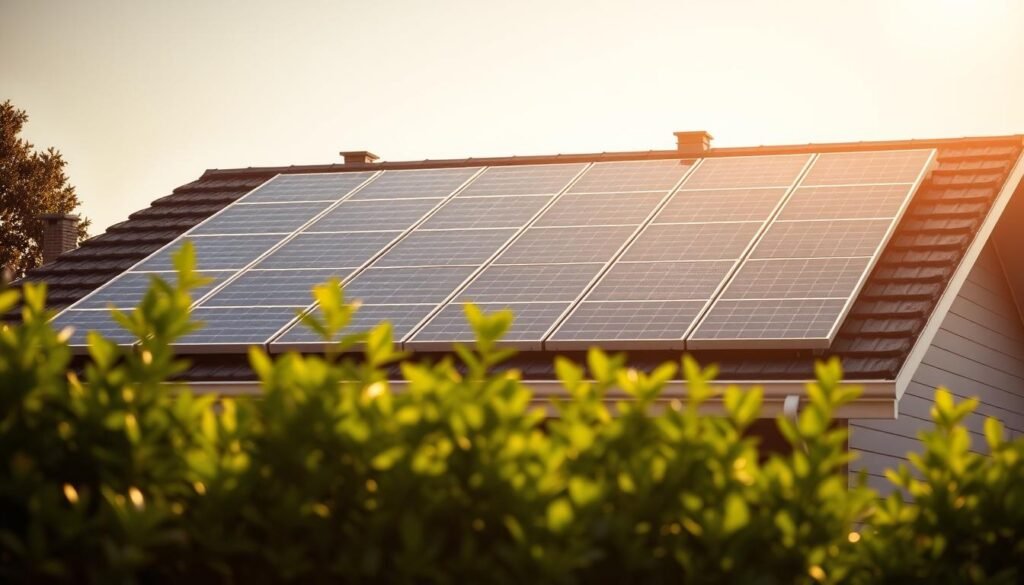
Battery Storage Options
Battery storage is a crucial component of a renewable energy system, allowing homeowners to store excess energy generated during the day for use at night or during power outages. Popular battery storage options include:
- Lithium-ion batteries, known for their high efficiency and durability
- Lead-acid batteries, a more affordable option with a proven track record
When selecting a battery storage system, consider factors such as capacity, depth of discharge, and warranty.
Australian Rebates and Incentives
The Australian government offers various rebates and incentives to encourage the adoption of renewable energy solutions. These include:
- The Small-scale Renewable Energy Scheme (SRES) for solar panel installations
- State-specific rebates and feed-in tariffs for excess energy
Homeowners should research available incentives in their area to maximize their savings.
By incorporating renewable energy solutions into your home renovation, you can significantly reduce your environmental footprint while enjoying the benefits of lower energy bills and increased property value.
Eco-Friendly Flooring Options
When it comes to eco-friendly home renovations, one of the most impactful choices homeowners can make is selecting sustainable flooring options. The right flooring can significantly reduce your home’s environmental footprint while adding value and aesthetic appeal.
Sustainable Timber and Bamboo
Sustainable timber is a popular choice for eco-friendly flooring. Look for timber that’s certified by organizations like the Forest Stewardship Council (FSC), ensuring it’s sourced responsibly. Bamboo flooring is another sustainable option, as bamboo is highly renewable and requires minimal pesticides and fertilizers. Both options offer durability and a natural aesthetic that can enhance any room.
Cork and Linoleum Alternatives
For those looking for alternatives to traditional timber, cork flooring is a soft, warm, and comfortable option that’s also eco-friendly. Cork is harvested from the bark of cork oak trees without harming them, making it a highly sustainable resource. Linoleum, made from natural materials like linseed oil and wood flour, is another durable and environmentally friendly choice. Both cork and linoleum offer unique benefits, including acoustic insulation and resistance to wear.
Recycled and Reclaimed Materials
Recycled and reclaimed materials offer a creative and sustainable approach to flooring. Using reclaimed wood from old buildings or recycled materials can add character to your home while reducing waste. These materials often come with unique histories and can be sourced locally, reducing transportation emissions. They’re a great choice for homeowners looking to make a positive environmental impact.
Green Kitchen Renovation Strategies
Embracing eco-friendly practices in your kitchen renovation can significantly reduce your environmental footprint. A well-planned green kitchen not only saves energy and water but also creates a healthier living space.
Energy-Efficient Appliances
Upgrading to energy-efficient appliances is a crucial step in a green kitchen renovation. Look for appliances with high Energy Star ratings, as they consume less energy and water. For instance, induction cooktops and energy-efficient dishwashers can significantly reduce your kitchen’s energy consumption.
Sustainable Countertops and Cabinetry
Choosing sustainable materials for countertops and cabinetry is another key aspect. Consider materials like recycled glass, bamboo, or sustainably sourced wood. For more ideas on sustainable materials, visit Sustainable Remodel Guide.
Water-Saving Kitchen Features
Implementing water-saving features is essential in a green kitchen. Install low-flow faucets and consider a tankless water heater to reduce water waste. Some key features to look for include:
- Low-flow faucets and aerators
- Water-efficient dishwashers
- Smart water management systems
By incorporating these green kitchen renovation strategies, you can create a more sustainable and eco-friendly home.
Bathroom Renovations with Planet-Friendly Approaches
Bathroom renovations offer a unique opportunity to reduce your environmental footprint. By incorporating eco-friendly elements, you can create a space that is not only luxurious but also sustainable.
Water-Efficient Fixtures and Fittings
One of the simplest ways to make your bathroom more eco-friendly is by installing water-efficient fixtures. Low-flow showerheads and toilets can significantly reduce water consumption. For instance, a low-flow toilet can save up to 60 liters of water per day. Look for products with the Water Efficiency Label and Standards (WELS) certification, which indicates their water-saving capabilities.
Sustainable Tile and Surface Options
Choosing the right materials for your bathroom renovation is crucial. Sustainable tile options include those made from recycled materials, natural stone, or porcelain. These materials are not only durable but also require less maintenance and can be sourced locally, reducing carbon emissions from transportation.
Ventilation and Heating Considerations
Proper ventilation and heating are essential for a comfortable and healthy bathroom environment. Consider installing an energy-efficient heating system and a ventilation system that reduces moisture and prevents mold growth. This not only improves air quality but also reduces the need for frequent repairs and replacements.
| Eco-Friendly Option | Benefits |
|---|---|
| Low-flow showerheads | Reduces water consumption |
| Recycled material tiles | Durable, less maintenance, eco-friendly |
| Energy-efficient heating | Reduces energy consumption, improves comfort |
Eco-Friendly Painting and Finishing Techniques
Eco-friendly painting is an essential aspect of sustainable home renovations in Australia. As homeowners become more environmentally conscious, the demand for green painting solutions has increased. This shift is driven by the need to reduce indoor air pollution and minimize the environmental impact of renovation projects.
Low-VOC and Natural Paint Options
One of the key considerations in eco-friendly painting is the use of low-VOC (Volatile Organic Compound) paints. These paints emit fewer harmful chemicals, improving indoor air quality. Brands like Dulux and Wattyl offer low-VOC options. Natural paints, made from natural ingredients like clay, lime, and plant dyes, are another alternative. They are biodegradable and non-toxic, making them an excellent choice for homes, especially for families with children or pets.
| Paint Type | VOC Level | Environmental Impact |
|---|---|---|
| Low-VOC Paint | Low | Reduced indoor air pollution |
| Natural Paint | Very Low | Biodegradable and non-toxic |
Sustainable Wallcoverings and Treatments
Beyond paint, wallcoverings and treatments can also be made sustainable. Look for wallpapers made from recycled materials or natural fibers like grasscloth or silk. Some manufacturers offer wallcoverings with low-VOC adhesives. Treatments such as natural wax or plant-based finishes can protect surfaces without harming the environment. As eco-friendly painting and finishing techniques become more mainstream, homeowners have a wider range of options to create a healthier living space.
“The choice of paint and wallcoverings can significantly affect indoor air quality. Opting for eco-friendly products is a step towards a healthier home.”
Responsible Waste Management During Renovations
Renovating your home can generate a significant amount of waste, making responsible waste management essential. As you upgrade your living space, it’s crucial to consider the environmental impact of your renovation waste.
Construction Waste Recycling in Australia
Australia has made significant strides in construction waste recycling. Many local councils and waste management companies now offer specialized recycling services for construction waste. For instance, some companies sort and process materials like concrete, brick, and timber for reuse in new projects. By opting for these services, you can significantly reduce the amount of waste sent to landfills. To learn more about effective renovation waste disposal practices, you can visit this resource for valuable insights.
Donating and Repurposing Old Materials
Before discarding old materials, consider donating or repurposing them. Many organizations accept gently used building materials, fixtures, and appliances. Donating not only reduces waste but also supports local charities and community projects. Additionally, you can get creative and find new uses for old materials, such as turning old pallets into furniture or using reclaimed timber for decorative features.
By adopting these strategies, you can minimize your environmental footprint and contribute to a more sustainable future.
Smart Home Technology for Environmental Efficiency
As Australians look to renovate their homes sustainably, smart home technology emerges as a key factor in reducing environmental impact. By integrating advanced technologies into home renovation projects, homeowners can significantly enhance their living spaces’ eco-friendliness and efficiency.
Smart home technology encompasses a range of innovative solutions designed to make homes more comfortable, convenient, and environmentally friendly. Some of the key benefits include:
- Improved energy efficiency
- Enhanced water conservation
- Increased home security
- Better indoor air quality
Energy Monitoring Systems
Energy monitoring systems are a crucial component of smart home technology, allowing homeowners to track their energy usage in real-time. By understanding their energy consumption patterns, Australians can identify areas for improvement and make informed decisions about their energy usage. For instance, the Energy Monitoring System by SolarEdge provides detailed insights into energy production and consumption, helping homeowners optimize their energy efficiency.
Automated Climate Control
Automated climate control systems enable homeowners to regulate their home’s temperature efficiently, reducing the need for heating and cooling. These systems can learn a household’s schedule and preferences to optimize energy usage. For example, brands like Carrier offer smart thermostats that can be controlled remotely via smartphones, ensuring that homes remain comfortable while minimizing energy waste.
Water Usage Management Technology
Water usage management technology is another vital aspect of smart home systems, helping Australians conserve water and reduce their environmental footprint. These systems can detect leaks, monitor water usage, and provide insights into consumption patterns. By adopting such technologies, homeowners can contribute to water conservation efforts while also potentially lowering their water bills.
By incorporating these smart home technologies into their renovation projects, Australians can create more sustainable, efficient, and comfortable living spaces.
Outdoor and Landscaping Eco-Renovations
Transforming your outdoor space into an eco-friendly haven not only enhances your home’s aesthetic appeal but also contributes to a more sustainable future. As you consider outdoor eco-renovations, there are several key areas to focus on to maximize your home’s environmental benefits.
Native Australian Plants and Xeriscaping
Incorporating native Australian plants into your landscaping is a highly effective way to reduce water consumption and support local biodiversity. Xeriscaping, a method of landscaping that minimizes water use, is particularly suited to Australia’s climate. By choosing drought-resistant native plants, you can create a beautiful and sustainable outdoor space.
Sustainable Decking and Paving Materials
When it comes to decking and paving, selecting sustainable materials is crucial. Options like recycled plastic, reclaimed wood, and permeable pavers not only reduce environmental impact but also add unique character to your outdoor areas. These materials help in managing stormwater runoff and reduce the heat island effect.
Eco-Friendly Outdoor Lighting Solutions
Eco-friendly outdoor lighting solutions, such as solar-powered lights and LED fixtures, significantly reduce energy consumption. These options not only lower your electricity bills but also minimize your carbon footprint. Strategically placing lights to highlight native plants and sustainable features can enhance the overall ambiance of your outdoor space.
By focusing on these aspects of outdoor and landscaping eco-renovations, you can create a more sustainable, beautiful, and enjoyable outdoor living area.
Conclusion: Creating a Sustainable Home for the Future
As Australian homeowners, embracing eco-friendly renovations is a crucial step towards creating a sustainable home for the future. By incorporating sustainable practices and materials into your renovation project, you not only reduce your environmental footprint but also enhance the comfort and value of your property.
The journey to a sustainable home involves several key strategies, from assessing your home’s current environmental footprint to implementing energy-efficient solutions and water conservation measures. By choosing locally-sourced materials, reducing waste, and investing in renewable energy, you can significantly reduce your home’s impact on the environment.
As highlighted in the previous sections, eco-friendly renovations offer numerous benefits, including improved energy efficiency, reduced utility bills, and a healthier living environment. By adopting these sustainable practices, Australian homeowners can contribute to a more environmentally friendly future while enjoying the comforts of a modern, eco-friendly home.

